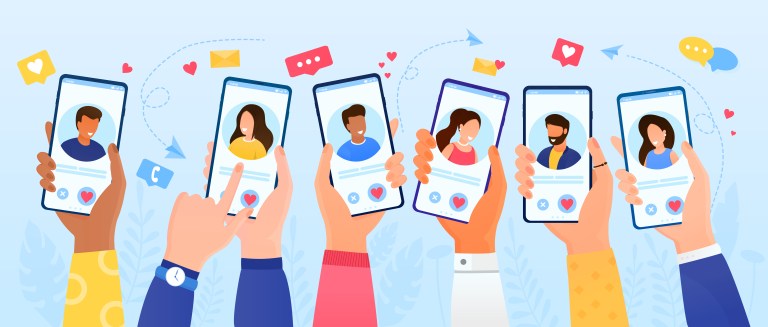The Will To Connect: Some Thoughts On Human Nature In The Age of Social Media
This preoccupation with “wills” isn’t just a contest to come up with the best catchphrase; it’s the search to discover the root motivation(s) of human behavior. Why do human beings do what we do? Why do we maintain crazy beliefs, engage in crazy activities, and stay in crazy relationships?

In my last article here, I discussed the need to have a serious conversation about social media ethics. I was deeply encouraged by the responses it generated, and I look forward to continuing the conversation, both online and off. In this piece, I’d like to tackle the issue of social media ethics from a slightly different angle, looking instead at the psychology behind our social media behavior. If ethics is all about examining what we should do, psychology is all about examining why we actually do what we do. And I firmly believe that while psychology without ethics is troubling, ethics without psychology is useless. Consequently, before we can figure out the “shoulds” of social media, it might be advisable, even necessary, to figure out the “whys.”
If you read enough psychology books, you soon discover that the phrase “the will to [fill-in-the-blank]” pops up a lot. Here’s a rundown of the most popular: the will to believe (William James); the will to power (coined by Nietzsche, then later adopted by Alfred Adler); the will to pleasure (aka, the pleasure principle — thank you, Dr. Freud); the will to meaning (Victor Frankl); and the will to happiness (pretty much every pop psychology book of the last five years).
This preoccupation with “wills” isn’t just a contest to come up with the best catchphrase; it’s the search to discover the root motivation(s) of human behavior. Why do human beings do what we do? Why do we maintain crazy beliefs, engage in crazy activities, and stay in crazy relationships? Is there some basic need or drive that could potentially explain our unexplainable behaviors and help us make better sense of our lives? Or at least help us make better decisions?
The wills to believe, pleasure, power, meaning, and happiness are all strong candidates for explaining much of human behavior. But seeing as we’re now living in the Age of Social Media, perhaps it’s time to add another one to the list: the will to connect.
As I’d like to define it, the will to connect is the basic human need (not want, but need) to be connected to someone and/or something outside of one’s self. It’s the need to be a part of a larger whole — a relationship, a group, a community, an organization, a collective effort or experience — that gives deeper meaning and coherence to our lives. It’s what binds the soldier to his unit, the churchgoer to her religion, the die-hard football fan to his favorite team, and all Taylor Swift fans to their favorite pop star. In its most intensely physical form, it’s experienced as ecstasy (which literally means “out of body”), while in its more spiritual forms, it can feel as if one is connected with God, Nature, or the Universe.
It may not explain all of our actions, but the will to connect is definitely one of the fundamental human drives. In fact, I’d argue that some of the other “wills,” such as the will to pleasure or the will to happiness, are actually extensions of the will to connect. Pleasure becomes a soulless game if pursued in isolation, while the pursuit of happiness is rarely successful when undertaken as a solitary enterprise. Indeed, as Jonathan Haidt argues in his brilliant book The Happiness Hypothesis, relationships are one of the key ingredients to happiness. You can’t find happiness all by yourself. Happiness requires connection.
Social media and the social web are the most significant technological manifestations of the will to connect in my lifetime. They allow millions of people to connect, form groups, share ideas, collaborate on projects, and join collectives in unprecedented ways.
These technologies are satisfying a primal need that already lies within us, but that traditional media rarely appealed to. Traditional mass media and advertising were one-ways streets: creators created, consumers consumed. By contrast, social media isn’t consumer driven. It’s connection driven. It’s driven by people who now have a platform with which to talk back to creators, and with each other. What’s more, they have more options in terms of how to spend their time and money, what entertainment to watch and how to experience it, and engaging in online activities that weren’t imaginable even five years ago. These people (you, me, everyone) now have more of a choice and more of a voice. They are no longer faceless, voiceless consumers; they are human beings—human beings empowered to connect.
That said, empowerment is only half the story. For although social media is satisfying our will to connect, it is also supercharging it. Or to put it more bluntly, social media is the technological equivalent of giving our will to connect a shot of steroids.
Unlike social media, the will to connect wasn’t born yesterday. It’s been with us since the dawn of civilization (and even before that). From family and religious rituals, to sports and politics and the rivalries they breed, to knitting clubs and Country Line Dancing and 24-hour hackathons, human beings throughout the millennia have been endlessly inventive when it comes to giving the will to connect a form of expression.
But once a technology comes along that supercharges the means we use to express our inner drives—as social media does with respect to our will to connect — it also supercharges the ends. Sometimes for the better, sometimes for the worse.
To use an analogy, consider our aggressive drives. Once upon a time — say, before the invention of gunpowder — if you wanted to kill someone, you had to really, really want to kill them. With notable exceptions, you typically had to engage in close physical combat, and put yourself at considerable risk of getting killed in the process. But as our killing technology “progressed,” it became easier to express both our individual and our collective aggressive drives — be it with a rifle, a handgun, or a long-range cruise missile. In other words, technology supercharged inner drives that we already possessed — in this case, the will to power. (By the way, Stanley Kubrick makes a similar argument in the opening twenty minutes of 2001: A Space Odyssey. Technology advances, human nature stays the same.)
To complete the analogy: social media is to the will to connect what gunpowder was to the will to power — a technological advance that supercharges a basic human drive.
Please understand, I’m not arguing that social media is the equivalent of gunpowder in terms of actual consequences, although it has certainly played a role in several tragedies, such as the suicide case involving Rutgers student Tyler Clementi. Instead, what I’m arguing is that 1) social media is rooted in the will to connect; 2) it has given us a powerful means for expressing that need; and 3) it has supercharged both the means of expressing that need, and the end results. And while those end results can be, and often are, empowering, it’s important to recognize that they can also be disruptive and destructive. (Just picture some of the negative forms the will to connect can assume — bullying, badmouthing, betrayal, bitchiness, to name just the ones that start with “b” — and magnify their consequences on a massive social media scale. It’s not a pretty image.)
So what does the will to connect mean for all of us living in the Age of Social Media? Well, for many businesses and organizations, it has meant a complete overhauling of decades-old revenue models and a seismic shift in how they market to connect with their consumer and audience base. And indeed, most of the current books about social media are specifically written for business leaders and entrepreneurs, to help them navigate these uncertain waters and better connect with today’s ultra-connected, connection-driven consumer. (Of the books in this category, Paul Adams’s Grouped and the work of Dan Zarrella particularly stand out.)
But what about the ultra-connected, connection-driven consumer (you, me, everyone)? How do the rest of us make sense of these new technologies that both appeal to our will to connect and supercharge its impact? How do we make sure we don’t misuse them? And how do we make sure businesses, organizations, politicians, radio talk show hosts, and other influencers don’t questionably exploit that need to serve their own ends?
This brings us back to the subject of ethics, and the importance of using and engaging with social media responsibly. And the first step in using it responsibly is to know why we use it in the first place: to satisfy our will to connect. Whether we’re posting photos of our friends, “liking” our favorite band, tweeting an article, “checking in” at our local coffee shop, or sharing a video that made us LOAO or that could potentially change the world, we are all driven by a need to connect — a need as powerful online as it is off.
This is essentially what the marketing books about social media are teaching businesses and organizations, so that they can better influence us. Wouldn’t it be nice for the rest of us to have this knowledge as well, so that we can better influence ourselves?
Long before social media was ever dreamed of, E.M. Forester prefaced his novel Howard’s End with a poignant two-word epigraph: “Only connect.” In the Age of Social Media, we’re now connected to each other, and connecting with each other, like never before. Which is the reason why all of us must be more aware of the “whys” and the “shoulds” of our social media behavior. Social media is the “gun powder” of our generation — an advance in technology that supercharges our drives, and creates as much chaos and confusion as it does opportunity. That said, I’m a bit more optimistic than Mr. Kubrick. Yes, technology advances, but human beings needn’t stay the same; we can be motivated (through psychology) and educated (through ethics) to improve our behavior.
Admittedly, we may never be rid of trolls, bullies, mean girls, hate mongers, and over-sharers, and no doubt we will continue to see the news headlines filled with social media disaster stories, and even tragedies. But while it may sometimes feel like a hopeless quest, a more sane and humane social web is surely a goal worth striving for.
When there’s a will to connect, there’s always a way. ![]()




